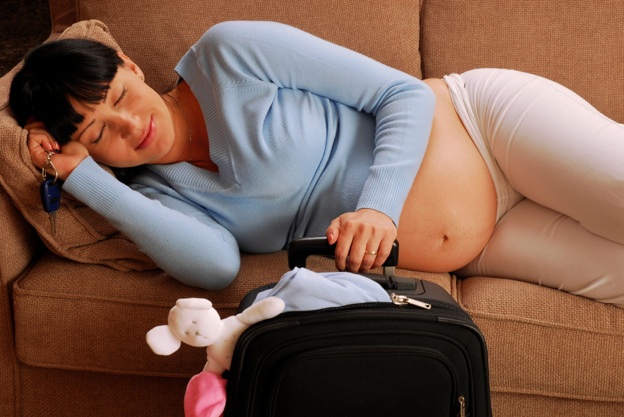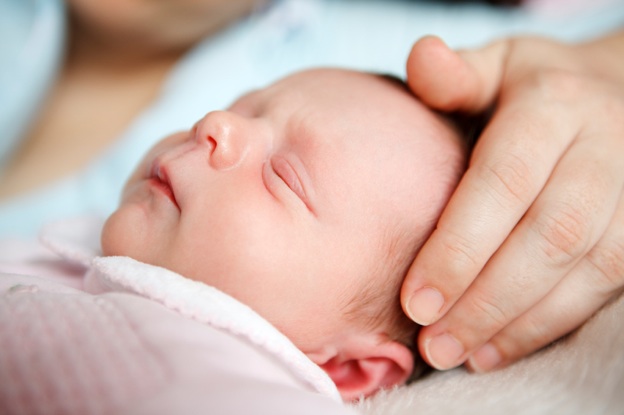SingaporeMotherhood | Pregnancy
October 2012
Your Hospital Delivery Bag Checklist

Unless you have a planned Caesarean section or induced delivery, chances are that you will not be able to predict the exact day of your baby’s arrival. As some babies may arrive much earlier than your estimated due date, it is good to have a hospital bag packed as early as your 35th week of pregnancy to ensure that you have everything you need when the time comes. After all, you wouldn’t want to be scrambling to pack and dealing with labour pains at the same time!
The following is a list of items which you may like to include in your own checklist. As you work out your list, mark the items which you still need to use on a daily basis so that you will not forget to put them in when it is time to go to the hospital.
[banner][/banner]
1. Items required for hospital registration
The most important document to bring along is your identity card. If you have any pregnancy complications or medical history which the hospital should know about, bring along your medical records and make a list of any drug allergies which you may have. In the event of an emergency, or if you are in too much pain to inform the medical personnel yourself, your husband or caregiver can provide them with the documents that you have packed.
2. In the labour ward
- Birth plan — If you have specific requests during labour, work out a birth plan with your gynaecologist beforehand and bring along a copy for the hospital staff.
- Prenatal class notes — It is helpful to bring along some notes on pain relief during labour if you need to refer to diagrams for specific positions to adopt or massages which your husband or caregiver can perform for you.
- Transcutaneous Electrical Nerve Stimulation (TENS) machine — If you intend to use the TENS machine for pain relief during labour, rent it from the hospital and try it out at home for several weeks before you are due. Remember to bring the machine along to the labour ward!
- Soothing music — Load up your iPod or other devices with soothing music that can help you to relax during labour. Some hospitals provide CD players in the labour ward, and you can bring along your favourite CD as well.
- Pregnancy journal — For those who opt for an epidural block in the early stages of labour, the wait till you are sufficiently dilated for the final push may be as long as 12 hours for a first time mother. If you are not too nauseous or drowsy from the epidural, filling up your pregnancy journal may be a good way to pass the time.
- Snacks — Some doctors discourage eating anything after labour has begun, while others may permit light snacks. In any case, keep a packet drink and some biscuits handy, if not for yourself, at least for your husband or caregiver who may have a long wait in the labour ward with you.
- Camera — For the all-important first shot of baby.
3. Packing for your stay
- Toiletries — For those who observe strict confinement rules of not washing your hair during confinement, pack some dry shampoo. Check if your hospital provides the other basic toiletries such as soap, toothbrush and toothpaste, otherwise, bring a small travel kit with you. As your body discharges the remaining contents of the womb after delivery, expect heavy blood flow for the first few days after giving birth. Bring along sufficient sanitary napkins and a sanitary mat if required.
- Clothes — A typical hospital stay is two nights for a normal delivery. Unless you are comfortable being seen in your pyjamas or hospital-issued garments, pack two days’ worth of nice, comfortable clothes for your first photos with baby and for receiving guests.
Loose fitting, front-buttoned tops are recommended for the ease of breastfeeding. Because of post-delivery pains and difficulty moving about, some women find it more comfortable to wear a skirt or dress rather than pants, which are trickier to put on.
Disposable maternity-sized underwear may also be useful during this time of heavy blood flow.
- Nipple cream — The first few attempts at breast feeding may be uncomfortable or painful. Incorrect feeding techniques may result in abrasion or bleeding of the nipples. To reduce chances of this occurrence or help a wounded nipple to heal faster, have some nipple cream on stand by. This is available at most hospital pharmacies.
- Inflatable rubber ring — It may be painful to sit up for a day or two after delivery as the wound from an episiotomy or vaginal tear may be uncomfortable. Some women find that sitting on an inflatable rubber ring (also used by patients recovering from a piles-removal operation) helps to relieve the strain on the wound, while others are fine to sit without the ring. Some hospital pharmacies sell this ring, and you may like to wait and see if you need it before purchasing it.
4. Packing for baby
- Mittens and booties — A newborn’s fingernails may be long and it is not advisable to cut the nails until the baby is older. Mittens are helpful to prevent your baby from accidently scratching herself, while booties help to keep the feet warm. As a newborn’s hands and feet may be too tiny for the mittens and booties, you may need to secure them in place with ribbons or surgical tape—just ensure that they are not worn too tightly and restrict blood flow.
- Front-buttoned tops — As the neck of a newborn is not strong, it is advisable to dress the baby in front-buttoned tops rather than T-shirts which need to be pulled over the head. Pack at least one top for each day in the hospital. Bottoms are not necessary at this stage as the baby’s umbilical cord stump is still attached, and the waistline of shorts or pants may press on the cord stump.
- Diapers and wet wipes — Some hospitals may provide free samples of diapers and wet wipes. However, if they do not, get ready some newborn-sized diapers and wet wipes (or cotton wool, if you prefer to just clean your baby with water instead of chemical-laden wet wipes).
- Milk bottle and milk powder — If you are not intending to breastfeed, check with your hospital if they provide your choice of formula milk. If they do not, bring along your desired brand of milk bottles and milk powder, and inform the hospital staff.
All content from this article, including images, cannot be reproduced without credits or written permission from SingaporeMotherhood.
Follow us on Facebook, Instagram, and Telegram for the latest article and promotion updates.






